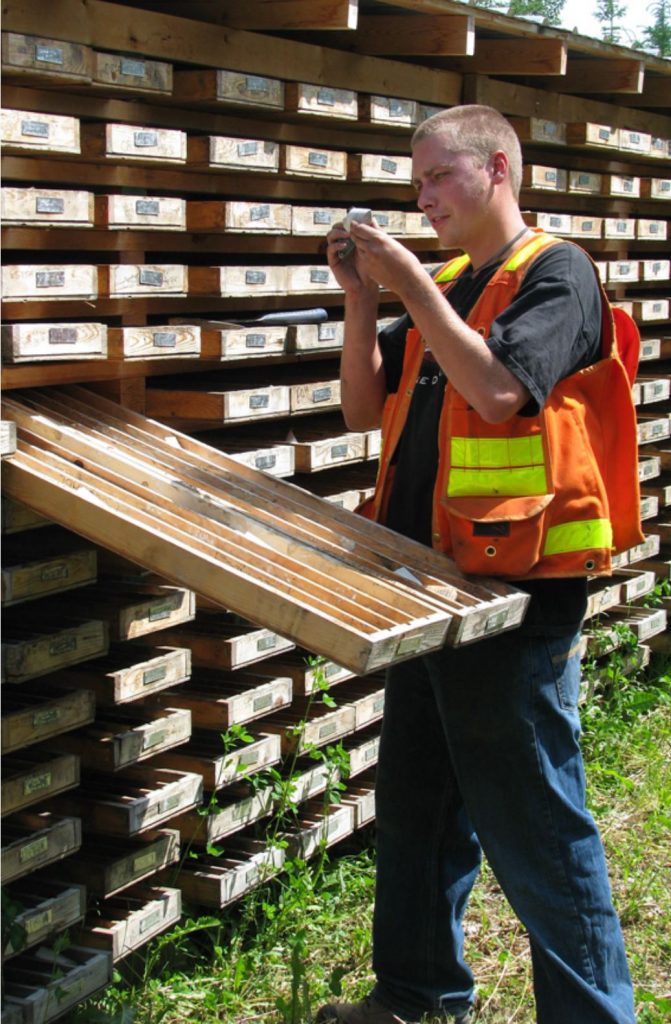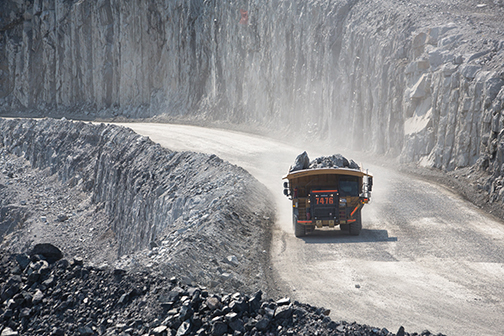[caption id="attachment_1003730100" align="aligncenter" width="289"]
 Examining core at the Spanish Mountain gold project in B.C. (Image: Spanish Mountain Gold)
Examining core at the Spanish Mountain gold project in B.C. (Image: Spanish Mountain Gold)[/caption]
BRITISH COLUMBIA – Vancouver-based
Spanish Mountain Gold has the results of the latest metallurgical tests for its Spanish Mountain project 70 km northeast of Williams Lake. The results were in line with earlier test results.
Tests were performed on the power requirements for crushing and grinding, flotation parameters and cyanidation of the flotation concentrate.
The key findings include:
- The average crusher work index for all samples was 9.5 kWh/t and the average ball mill work index was 12.2 kWh/t to reach a coarse grind of 180 microns. This indicates a low power requirement for crushing and grinding.
- The mill flowsheet has been simplified to include conventional bulk flotation to produce a gold-bearing concentrate representing about 3.5% of the mill feed weight. The concentrate will be reground before carbon-in-leach cyanidation, and the floatation cleaner tails will be scavenged in a gravity circuit.
- Overall gold recovery in recent testing was up marginally at 91%, compared to 92% in the 2017 preliminary economic assessment.
- Finally, cyanide consumption is lower than any previous test.
The Spanish Mountain gold project has a measured and indicated resource of 270.1 million tonnes grading 0.40 g/t gold (3.5 million contained oz.) and 0.67 g/t silver (5.8 million contained oz.) The inferred resource is about 181.4 million tonnes at 0.31 g/t gold (1.8 million contained oz.) and 0.65 g/t silver (3.8 million contained oz.)
More information about Spanish Gold is posted at
www.SpanishMountainGold.com.

 Examining core at the Spanish Mountain gold project in B.C. (Image: Spanish Mountain Gold)[/caption]
BRITISH COLUMBIA – Vancouver-based Spanish Mountain Gold has the results of the latest metallurgical tests for its Spanish Mountain project 70 km northeast of Williams Lake. The results were in line with earlier test results.
Tests were performed on the power requirements for crushing and grinding, flotation parameters and cyanidation of the flotation concentrate.
The key findings include:
Examining core at the Spanish Mountain gold project in B.C. (Image: Spanish Mountain Gold)[/caption]
BRITISH COLUMBIA – Vancouver-based Spanish Mountain Gold has the results of the latest metallurgical tests for its Spanish Mountain project 70 km northeast of Williams Lake. The results were in line with earlier test results.
Tests were performed on the power requirements for crushing and grinding, flotation parameters and cyanidation of the flotation concentrate.
The key findings include:





Comments